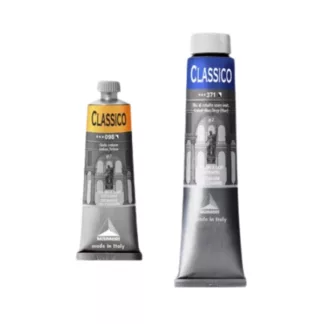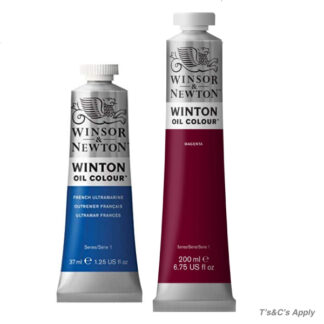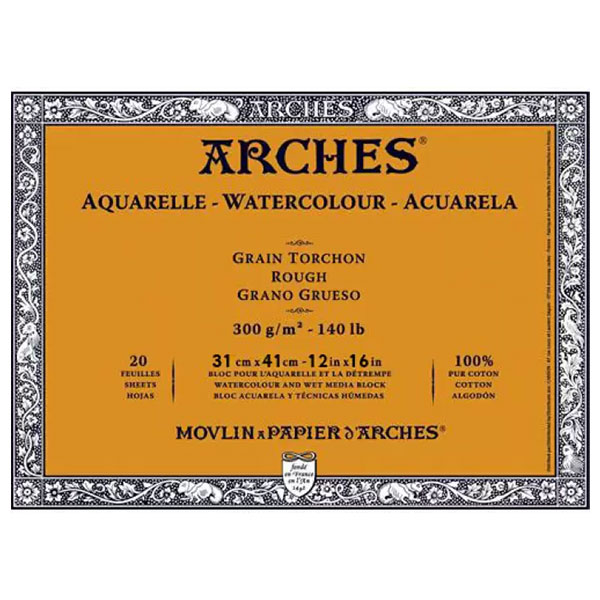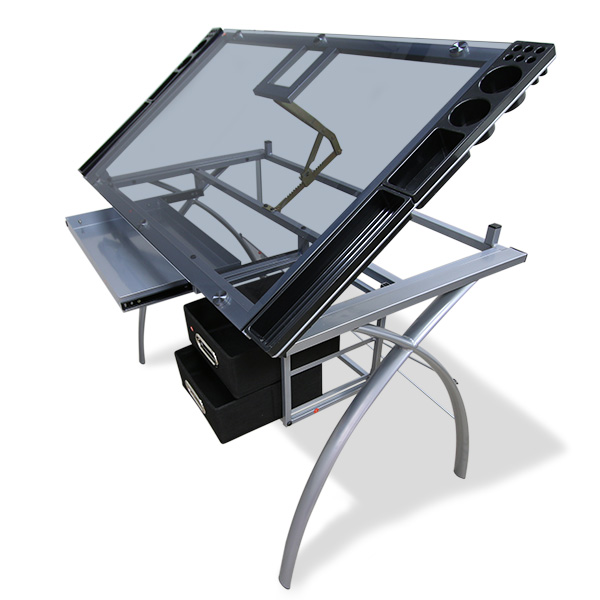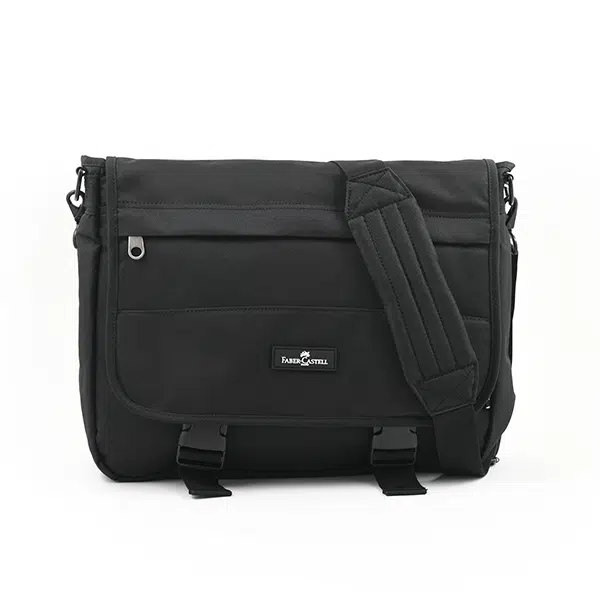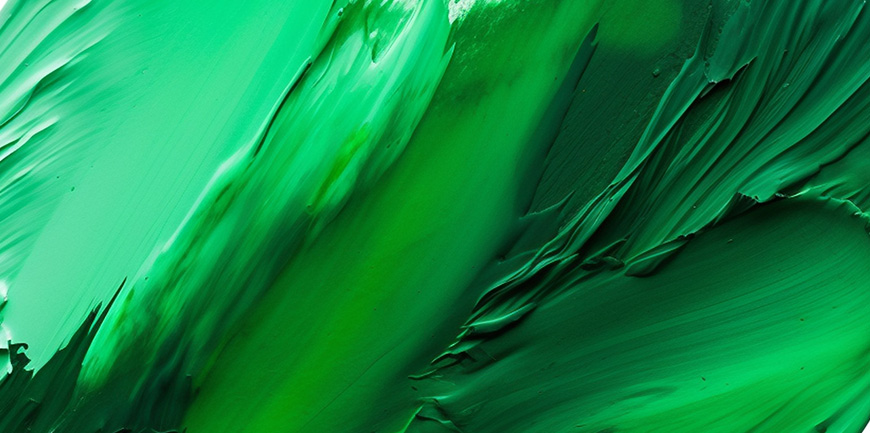
This may seem self-evident, but many beginners try to avoid this learning curve. Often tube colours are used without adjusting them very much. This can lead to unfortunate colour choices in your paintings. The top contender for colour disasters is green. This colour is everywhere in nature, but why is it so difficult to get realistic looking green colour in your paintings?
Observe green colour and mix It
In this article, I am going to show you my simple approach to getting accurate green colours. The trick is to avoid using tube greens. Why not you may ask? To learn how to see like an artist means developing your skills of observation. When you see the actual colour in nature you realise that you cannot get that colour simply by squeezing green out of a tube. It has to be mixed.
The only way to learn to mix colour is to do it from scratch with the true colours at our disposal. That is the primary colours with white to adjust them.
Automatic colour harmony
Another huge benefit of this approach is that your painting develops a beautiful colour harmony. However, if you use generic tube colours your painting is unlikely to have colour harmony. It will be made up of unrelated colour spots and passages that simply do not want to get along.
First steps to beautiful greens
Observation is key. When you see a grassy field, for instance, or trees in the forest, it is so easy to make them a uniform green. The grass is green your mind says. But stop and take a closer look at the landscape. That field is more likely to be a yellowy green. Maybe even a greenish-yellow ochre for the most part. That is the colour to mix. It will look natural.
Perhaps the trees are an orange-green colour. Not that emerald green from the tube. So having established what the green actually looks like, how do you mix it?
Colour Choices
A limited palette of the following will give you beautiful greens and much more:
- Lemon yellow
- Yellow Deep
- Red light
- Alizarin crimson
- Ultramarine blue
- Cerulean blue
- Titanium white
Shop all paints online >
Basic Green
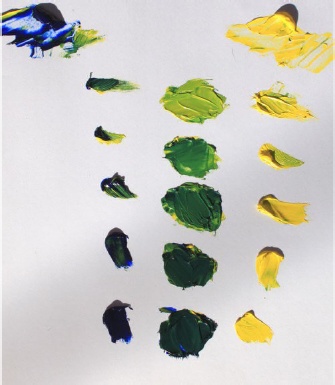
Start with an equal portion of ultramarine blue and lemon yellow. Mix a series of greens starting with five parts yellow and one part blue. Progress until you have five parts blue and one part yellow.
Red to the Rescue
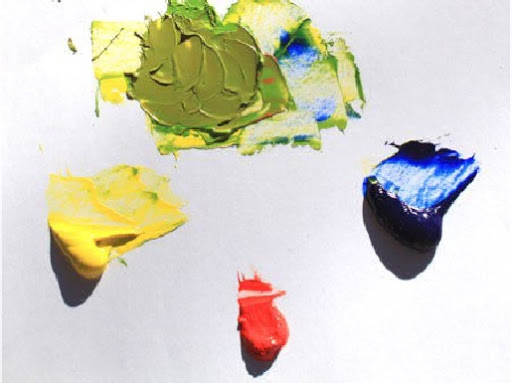
Are your greens looking too strident? Calm them down by adding a smidgen of red. When you add the complement to a colour, the effect is to knock back the original colour. Be careful though as too much red will make your green look a sickly grey. If this happens simply add more yellow and blue until the correct colour balance is restored. Notice that you can easily get an olive green or yellow ochre this way.
Adjust values and temperature with white
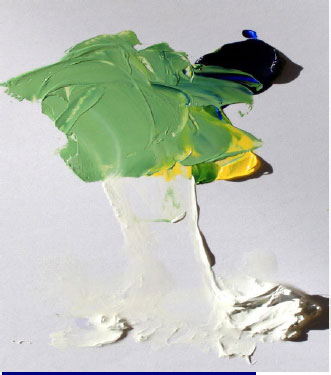
Once you have mixed your various greens try adding a little white to each pile. Observe what happens. This is called tinting your colour. Less is more, however. White can turn your colour into a cold and chalky hue. Beginners often add too much white. Instead when you add white to get a lighter colour, add a little pure colour back in. A little yellow or blue depending on which way the colour is leaning. This keeps your mixes colourful, which is the whole point.
Read our other blog post about Painter’s Tips: Types of White Paint and How to Use Them.
Other options
The other colours mentioned above open up more options. Simply substitute the colours and see what happens. For example, replace ultramarine blue for cerulean blue. Note the variety of greens achieved.
Conclusion
Experiment and then try to mix as many greens as you can find in your natural surroundings. You will become a stronger painter and your paintings will stand out thanks to your natural-looking colours.
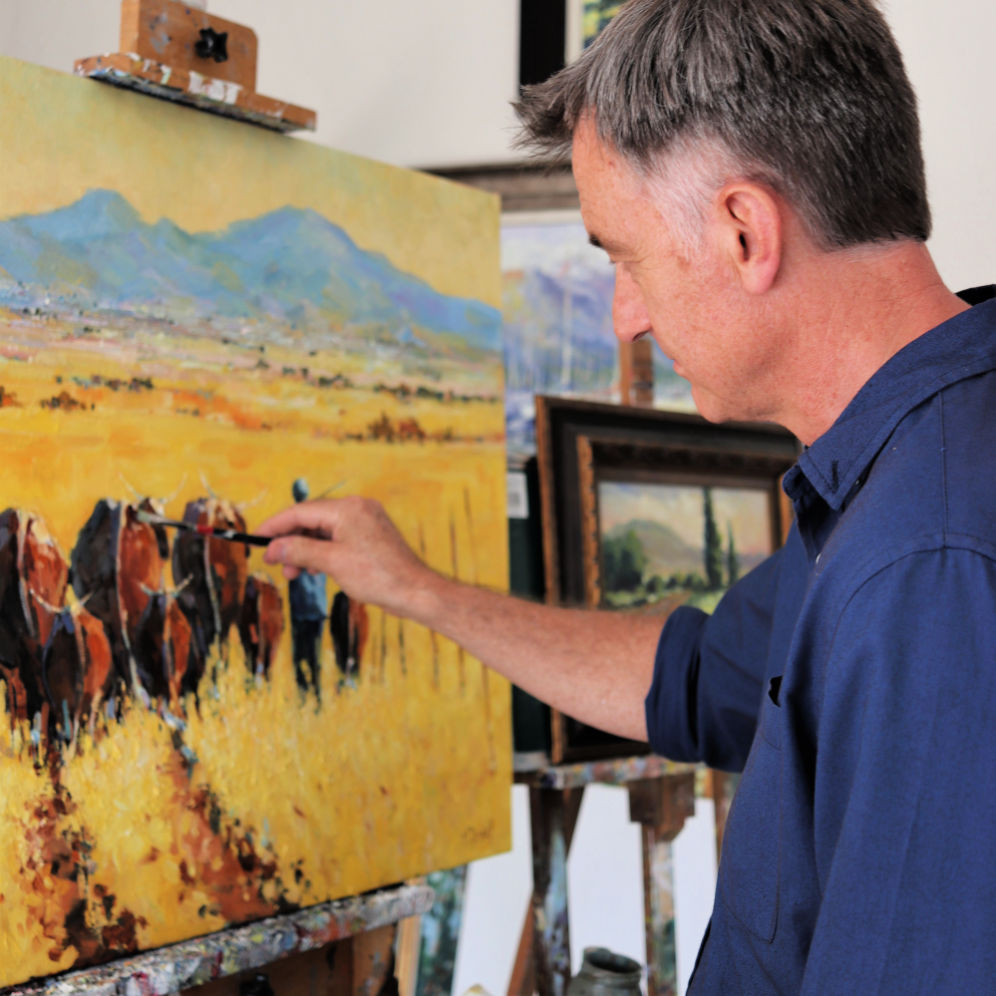
The Paint Pro – Malcolm Dewey
Malcolm Dewey is a full-time artist living in South Africa. Together with a loose brushwork style Malcolm’s paintings are filled with light, colour and movement.
Malcolm’s favourite painting mediums are oils, acrylics and watercolour. He aims to describe his painting with an economy of shape, but without compromising on paint and generous brushwork.
Website: www.malcolmdeweyfineart.com
Instagram: @malcolmdeweyfineart
Facebook: Malcolm Dewey Fine Art
-
 OPEN Slow-Drying Acrylics – GoldenR239.00 – R515.00
OPEN Slow-Drying Acrylics – GoldenR239.00 – R515.00 -
 Heavy Body Acrylics – GoldenR235.00 – R1 399.00
Heavy Body Acrylics – GoldenR235.00 – R1 399.00 -
 Classico Oil Paint Tubes – MaimeriR185.00 – R425.00
Classico Oil Paint Tubes – MaimeriR185.00 – R425.00 -
 Amsterdam Standard Series Acrylic Paint – Royal TalensR185.00 – R849.00
Amsterdam Standard Series Acrylic Paint – Royal TalensR185.00 – R849.00 -
 Winton Oil Colour Paint – Winsor & NewtonR165.00 – R1 199.00
Winton Oil Colour Paint – Winsor & NewtonR165.00 – R1 199.00



